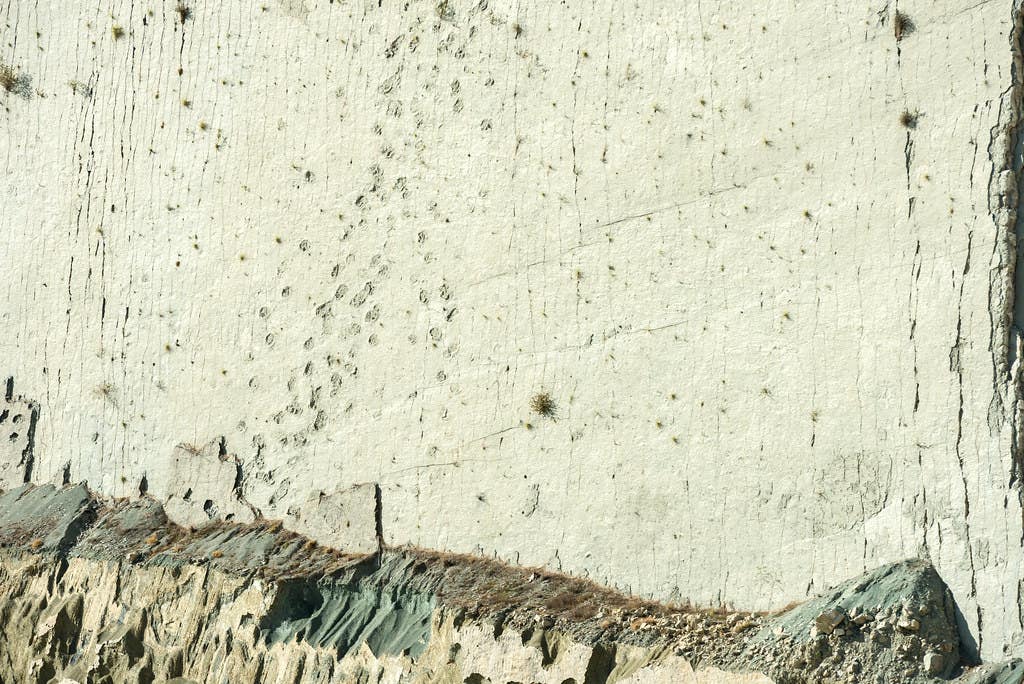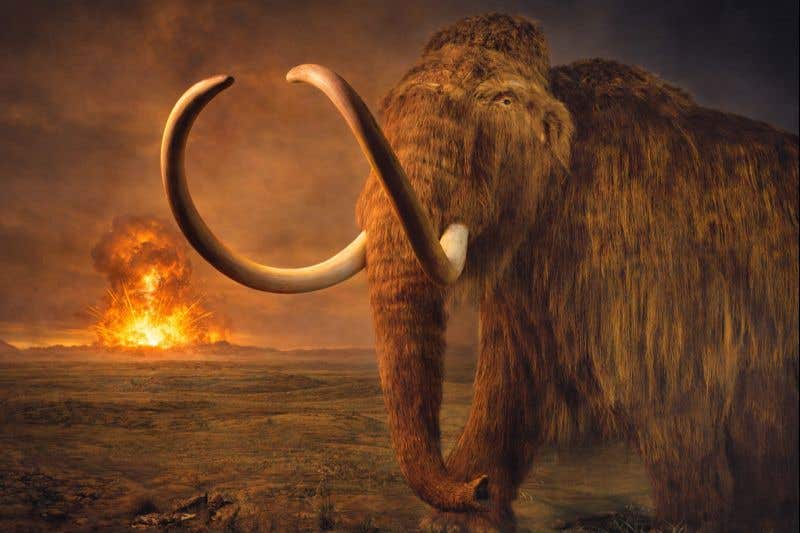The Incredible Dinosaur Wall of Bolivia
Although dinosaur tracks have been discovered the world over, climbing up a near vertical wall in a Bolivian quarry

[Aug. 2, 2020: Kuriositas]
Some things appear where you least expect them. Although dinosaur tracks have been discovered the world over, climbing up a near vertical wall in a Bolivian quarry? Bolivia – yes, fine. Zooming up hundreds of feet towards the skies? Hardly. Yet here they are. Spread across a limestone slab a mile long and almost 300 feet high, this great wall at Cal Orcko near the city of Suvre reveals more than 5,000 footsteps, with 462 discrete trails.
Yet sixty eight million years ago (give or take a million or two) this immense vertical wall was a muddy plain across which dinosaurs danced. Although the last verb is not one usually common in describing events from the Jurassic period, puzzled palaeontologists have call it the Dinosaur Dance Floor because many of the prints are positioned in strange patterns.
Back in the cretaceous period, Cal Orko bordered a vast lake. It was here that the first flowers bloomed on the continent and it was not long before they attracted herbivores. It was only a short time afterwards that carnivores (including the favorite of many, T-Rex) moved in too. As this melee of creatures moved around the shoreline they left their footprints in the mud.
We have the variations of the climate to thank for their preservation. A period of dry weather solidified the prints. Then, when the wet weather came around again they were buried under sediment and more mud. There are seven layers of footprints made in this manner at Cal Orco. The tectonic movements of the earth’s plates pushed the flats and their footprints inexorably upwards. Nature made the perfect viewing angle for the scattered tracks of the dancing dinosaurs.
Like these kind of stories? Get The Brighter Side of News' newsletter.
Across the mud flats all those millions of years ago a baby Tyrannosaurus Rex made its solitary way across the banks of the lake. All told his tracks extend for 347 meters and are the longest dino-tracks ever discovered. The baby Rex has even acquired a nickname – Johnny Walker.
Almost all of the prints are so well preserved that the individual species which made them can be ascertained. As well as Johnny Walker about eight species have been recognized. They include the Ankylosaurus, the Titanosaur and Carnotaurus.
Unfortunately these tracks will be lucky to last another ten years, let alone ten million. Erosion and mining in the vicinity means that landslides are common. Whole slabs of the trails have fallen off since they first appeared on the cliff face. Yet locals are not pessimistic. They believe that below these tracks perhaps something even more incredible lies in wait to be discovered..... Read More



